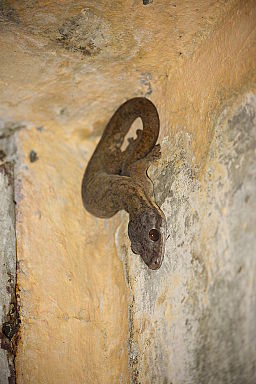It's been a busy week since I last posted a fieldwork update! Unfortunately, my camera conked out a while before that, so my illustrative ability will be lower than usual. Fortunately, persistent emails to NIKON finally convinced someone to reassure me that my warrantee will probably cover whatever has happened to it, even if I can't ship it till a few days after the warrantee expires. Probably.
Despite being outside of the U.S., I had a fantastic Thanksgiving at La Selva Biological Station. We had a long field day there, with a 1.5 hour hiking commute and
a lot of rain and mud. It rained most of the day while we were out, so when we returned the next day a lot of the lowland trails were flooded. We found an eel swimming down one of our trails the next day! After the long day and a bit of rest, we were treated to a truly fantastic Costa Rican hybrid Thanksgiving feast. About 40 people were in attendance, and there were tables and tables laden with side dishes and desserts. My favorite was a turkey carved out of pineapple! We drank ginger
chicha and I my entree was a tomato baked with basil, spinach, and cheese. Short of being with family, it was the best Thanksgiving I could hope for.
La Selva was a great place to look for animals; notable sightings include two
Leptophis nebulosis (Oliver's parrotsnake) and a
Bothriechis schlegelii (eyelash viper). Very cool! Also saw some unidentifiable bats and a lot of glass frogs.
 |
| Bothriechis schlegelii |
The following week was the last one available for fieldwork, and we tried to squeeze in as much as possible. At one sight, we had a ball of a time hopping down an almost-too-large river using boulders. Low sightings there due to rain, but I did see my first wild
Thecadactylus rapicauda (turnip-tailed gecko)!
 |
| Thecadactylus rapicauda |
Our last site of the season here, we did a double: day and night surveys in the same day. The stream transects were absolute slogs; we split to either side of the river and I spent too much of the searching time whacking at grass and brambles taller than myself, trying to follow the riparian corridor. We finished early enough to head back to town for a special pizza dinner before heading back out in slightly-damp field clothes for our night surveys. I had good luck catching anoles by hand, something I've been working on the whole trip. It's really, really helpful to do it at night, when they are slowed by sleep and cold! Land transects in the pasture were unsurprisingly unfruitful, but we were on a big beautiful piece of land and had a small audience of horses and (friendly!) cows for a lot of our ramblings.
It was a great field season: I learned a lot about herpetofauna sampling techniques and systematics, Costa Rica flora and fauna, swamp locomotion, dissertation structure, and lots more!

